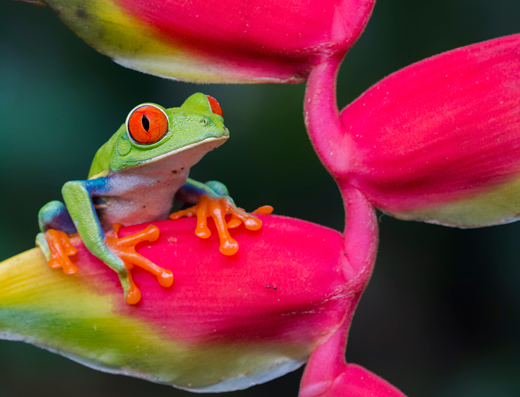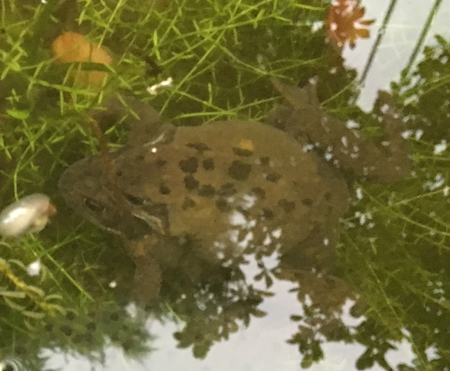New research published this week shows that smaller amphibians may be more vulnerable to extinction than larger amphibian species.
A study led by Queen’s University Belfast has found that the risk of extinction among amphibians, the most endangered vertebrates on the planet, increases for species of smaller body size as their females produce fewer babies per birth.

Scientists had thought that animals of larger body size, be they hypercarnivores, or megaherbivores were more vulnerable to extinction. In popular culture, most people are aware of the threat of extinction to animals such as whales, pandas, big cats and polar bears. These large-bodied animals are certainly in danger. It has been postulated that we are currently experiencing a mass extinction event, brought on mainly due to the behaviour of Homo sapiens.
This newly published research in the journal Global Ecology and Biogeography, which represents a collaboration between Tel Aviv University, the University of Lincoln, Exeter University, Queen’s University (Belfast) and Nottingham Trent University, is the first to suggest amending the theory to focus on reproduction levels of animals rather than on body size when assessing extinction risk.
A Global Challenge
Regarded as one of the most pressing challenges facing our world, scientists are determined to better understand the factors that drive extinction.
Amphibians, such as frogs, toads, newts and salamanders, in particular, have become the iconic example of human-induced extinctions. Amphibian species are dying out faster than any other group of vertebrates on Earth. It has been calculated that something like forty per cent of all known species of amphibians currently face the threat of extinction.

Picture credit: Everything Dinosaur
Not Focusing Just on Mammals
One of the most accepted theories regarding extinction risk is that larger body size significantly increases the extinction threat. This hypothesis has been mainly driven via research into the Mammalia. This research is the first to investigate the causes behind extinction in amphibians based on the theory that it is not body size, but the number of babies a female produces per clutch that determines extinction risk.
Thousands of species from around the world were studied, irrespective of their conservation status. The researchers then mapped their level of endangerment against body size and their number of babies produced per batch of eggs.
The Fewer the Offspring the Greater the Risk
Strong evidence was found indicating that extinction risk increases towards species that produce fewer offspring, such as the “rain frogs” (Eleutherodactylus), whereas extinction risk decreases towards species that produce more, such as different species of American water frogs (Lithobates) or the large-bodied ‘bufonid’ toads.
Lead author, Dr Daniel Pincheira-Donoso (Queen’s University), explained:
“More babies per clutch or birth means more variety among the babies. To some extent, it is like playing the lottery, the more tickets you play the higher your chances to win. In this case, more numerous and diverse babies increase the chances that at least some can survive the stress of environmental alterations, such as progressive climatic changes.”
Focusing on the number of offspring rather than looking solely at body size, may permit a more effective approach to amphibian conservation.
Everything Dinosaur acknowledges the assistance of a media release from Queen’s University Belfast in the compilation of this article.
The scientific paper: “The global macroecology of brood size in amphibians reveals a predisposition of low‐fecundity species to extinction” by Daniel Pincheira‐Donoso, Lilly P. Harvey, Sheena C. Cotter, Gavin Stark, Shai Meiri and Dave J. Hodgson published in Global Ecology and Biogeography.






Leave A Comment